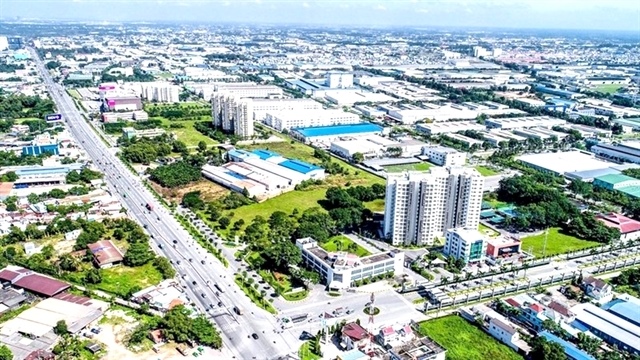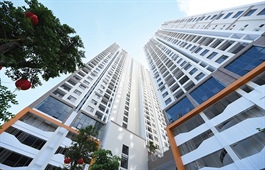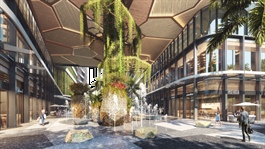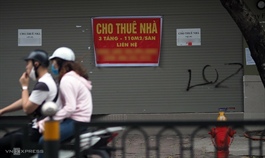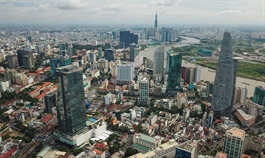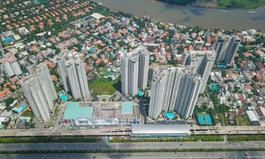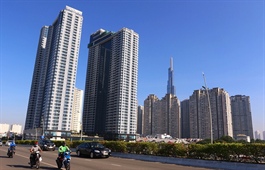Retail property market saw many changes in 2020 due to pandemic: Savills
Retail property market saw many changes in 2020 due to pandemic: Savills
The COVID-19 pandemic caused retail revenue to drop sharply in 2020, impacting the domestic retail property market, according to Savills Viet Nam.
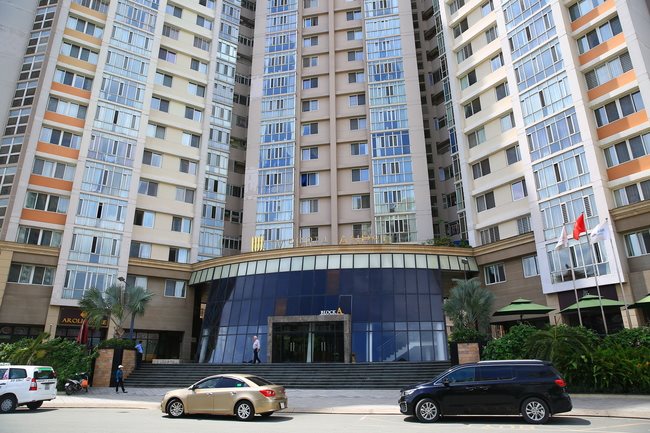
However, the market anticipates a revival of the retail sector in the fourth quarter (Q4) of this year and into the first quarter of 2021 due to the important year-end festivals and Tet (Lunar New Year) holiday.
In the third quarter of 2020, retail sales of goods and services (RSGS) eased 0.1 per cent year-on-year, after a Q2 pandemic induced drop of 12 per cent year-on-year.
To September 2020, total RSGS fell to US$40 billion, or 2 per cent year-on-year. However, retail sales of goods alone were up 10 per cent year-on-year while food and beverage (F&B) sales were down 39 per cent year-on-year.
With limited new central business district (CBD) supply over the short term due to the pandemic, new market entrants will be challenged. However, there is a wave of redevelopment underway in suburban street shops and larger mixed-use developments.
For instance, stock in Q3 was 1.5 million sq.m in HCM City and the average occupancy of 94 per cent was down 2 percentage points year-on-year. The pandemic caused some retailers, mostly in non-CBD areas, to end their leases or relocate.
Rents have remained stable year-on-year, as landlords with fully occupied space were reluctant to adjust rents or offer short term incentives. In some cases, monthly service fees were cut by US$2, or 30 per cent rental discounts for a few months were offered to new tenants.
Street sales hardest hit
Shopping centre occupancy of 95 per cent has remained high as leases tend to operate within a more structured framework and occupiers prefer to retain their space. Malls with a more rounded offering of shopping, entertainment and dining saw better footfall, Savills Viet Nam said.
“For prime street retail landlords, the debilitating effects of COVID-19 were immediate. With most tenants being small to medium enterprises, they were more affected by sudden revenue loss than larger-scale retailers,” said Troy Griffiths, Deputy Managing Director of Savills Vietnam.
“The pandemic has forced the major street retail chain tenants to alter their business strategies. Many F&B and fashion chains closed underperforming outlets which led to further vacancies. Tourism focused street retail in the CBD was hit hardest by travel bans adding to existing metro related disruptions.”
“Since early February, many street retailers have not renewed their leases. Those wanting to retain prime locations after the pandemic are either temporarily closed or seeking rent reductions. A recent Savills survey found tenants sought up to 40 per cent discounts compared to the maximum 20 per cent offered,” Griffiths said.
E-commerce boom
In addition, the pandemic has seen e-commerce opportunities increase, after forcing shoppers and retailers into behavioural change. Classic retailers have used technology to improve performance and enhance service, he said.
Greater focus on websites, e-commerce platforms and increased mobile and digital marketing are all refined outreach strategies. Customers familiar with online shopping have an increased variety of cost-based promotions supported by rapid door-to-door delivery.
A recent Google Temasek Report anticipated 43 per cent year-on-year local segment growth from 2018 to $15 billion in 2025 supported by 66 per cent of the population being regular internet users and 72 per cent having smartphones.
As e-commerce has increased, so have delivery services, especially F&B, with innovative owners ramping up delivery options. Supermarkets such as Co.opmart and Vinmart have expanded home delivery services, according to Savills.
This rapid growth has further influenced consumer behaviours. Nielsen research from July found, post-pandemic, 64 per cent of respondents will continue using delivery services while 63 per cent will increase their online shopping.
A survey of leading e-commerce websites including Shopee, Tiki, Lazada and Sendo showed visitor growth is accelerating.
In 2021, more than 80 per cent of new retail supply will be in non-CBD areas. As consumers face the loss of income and increased uncertainty, developers are delaying launches. Those who are moving ahead may struggle with overseas brands suspending market entry and established businesses slowing expansion plans, according to Savills.
A Savills survey in Q3/2020 revealed many F&B and fashion tenants have either closed or reduced leased areas. This downsizing trend is likely to continue into the mid-term.
A combination of early containment, improved financial governance, Government support mechanisms, and global stimulus programmes have raised expectations of recovery in Viet Nam. According to the most recent ADB report, Viet Nam with 6.8 per cent forecast for 2021 will have the highest GDP growth in Asia.
“Lower rental costs are likely to invigorate the industry while classic retailers will need to further innovate strategies to stay relevant,” said Griffiths.
“The ‘social’ sectors most affected by the outbreak such as F&B, gyms and cinemas should recover faster from the crisis as consumers will be quick to embrace ‘normality’ after months of social isolation. Sectors with a stronger online presence such as fashion may see a slower return considering the shift in consumer behaviour to online sales," he said.





